Ten regions to reconsider in 2023.
Maybe the world is trying to tell us to slow down. So far this year, we’ve clocked 29 climate-related disasters that have each caused more than a billion dollars worth of damage, from a catastrophic “monsoon on steroids” in Pakistan to a pair of hurricanes that swept away bridges and homes in Puerto Rico and Florida, and record heat waves and drought that killed thousands of people and agricultural crops across Europe. The latter even exposed “hunger stones,” rocks engraved to mark low water levels during historic droughts. A circa 1900 inscription on one in Děčín, along the Elbe River in the northern Czech Republic, reads, “If you see me, then weep”—an ominous reminder that no pocket of the planet has gone untouched by climate change.
For all the good it can do in bolstering local economies and connecting cultures, tourism is a significant contributor to climate change. Three years after the word “covid” entered our daily vocabulary, tourism numbers from April to July 2022 exceeded pre-pandemic levels. Travel currently accounts for about 8% of global greenhouse gas emissions, and is poised to increase by 2030. And there are plenty of unquantified effects of overtourism: stress on supply chains, destruction of wildlife habitat, and overcrowding. As climate change intensifies, the damage may make popular destinations inhospitable to travelers and cause their economies to plummet.
We can have a positive impact on this world we love so dearly.
Anti-tourism movements and travel boycotts, especially to destinations accused of human rights or environmental violations, might seem like easy solutions. But they don’t usually have the desired effect. Simply choosing one destination over another doesn’t tell those in power—municipal governments—why you’re spending your dollars elsewhere. More than anyone else, blanket boycotts affect the lowest-paid and most vulnerable workers, typically women, migrants, and people of color.
For this year’s No List, we’re highlighting destinations to reconsider visiting in 2023 in three main categories: natural attractions that could use a break in order to heal and rejuvenate; cultural hotspots that are plagued with overcrowding and resource depletion; and locations around the world immediately and dramatically impacted by water crises.
We’re also looking at ways we can be more responsible travelers, by supporting destinations that focus on community-first initiatives and profiling Earth-conscious organizations with unique sustainable and eco-conscious approaches to tourism.
This year’s No List does not serve as a boycott, ban, or cancelation of any sort; but a call to travelers to consider wisely the choices we make. We can have a positive impact on this world we love so dearly.
Nature That Needs a Break
In a world of theme parks, Instagram-curated restaurants, and pop-up museums, it’s easy to forget that most of the world’s top attractions were created by nature and are very much still alive. But many of these natural sights have taken a beating–either by recent natural disasters or an influx of humans visiting. Some iconic landmarks have been damaged so badly that tourism bureaus and elected officials have asked travelers not to visit while the land, air, and sea recuperate. These natural destinations desperately need a pause from visitors.
France’s Cliffs and Calanques
Coastline erosion is a huge part of climate change, as larger storms wreak more havoc on beaches every year. France is currently dealing with dramatic coastline erosion that has more to do with a storm of tourists than weather. Étretat, Normandy, has been hit hard by an influx of visitors. The tiny town’s wastewater treatment facility had to be shut down for maintenance last year as it couldn’t handle the three times as many visitors as its regular population. More concerning are the frequent landslides from too much foot traffic. And the north coast isn’t the only area experiencing erosion from overtourism. Marseille’s Calanques National Park introduced a reservation system to visit its beaches, with a daily cap of 400 visitors.
“We need tourism, but a balance needs to be found. The tourists themselves would benefit the most. Many of them leave angry after having spent several hours in the car without being able to find parking, someplace to eat, or toilets, because there isn’t enough infrastructure. This mass tourism satisfies nobody,” said Jean-Baptiste Renié, an Étretat city councilor.
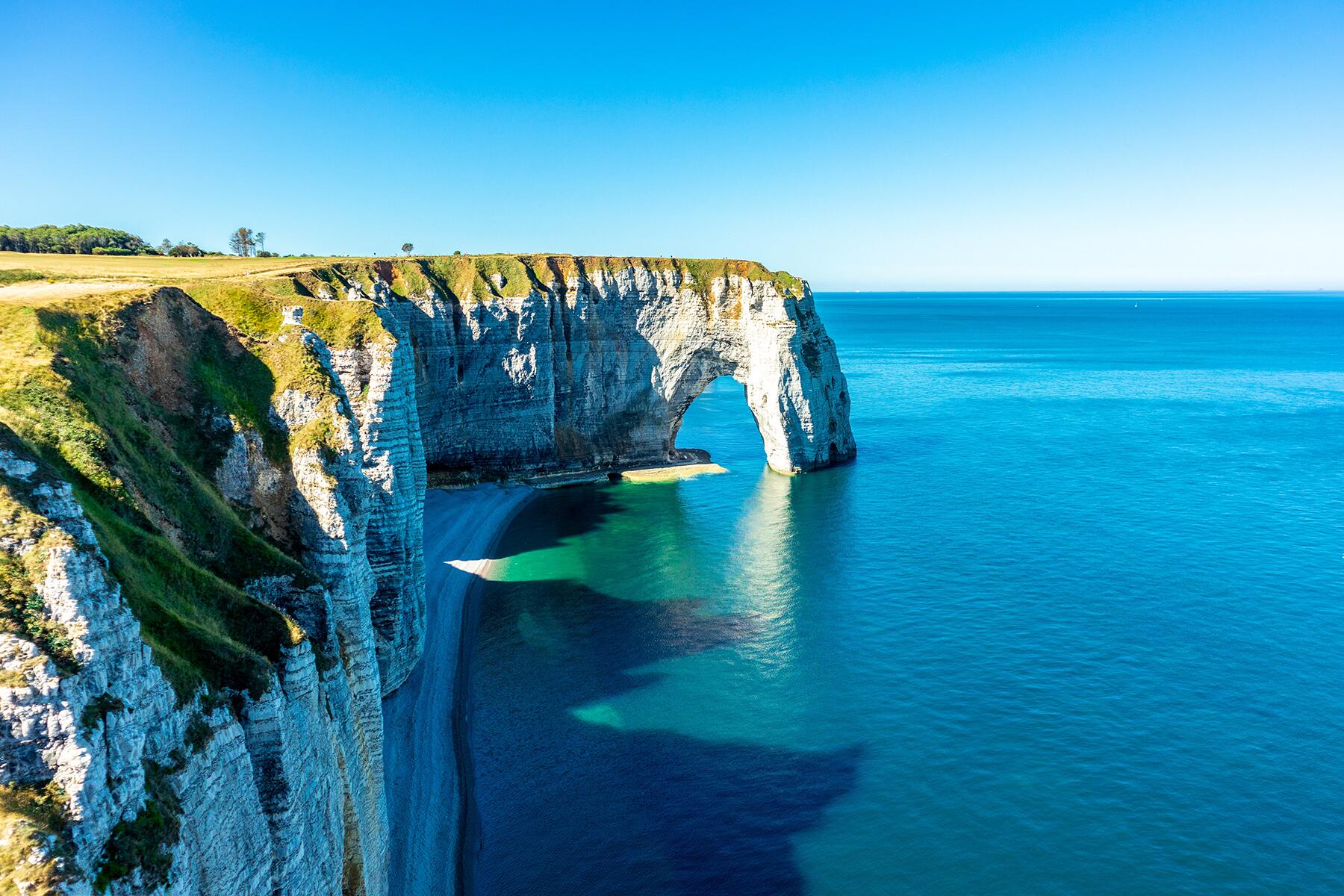
Lake Tahoe, California
Lake Tahoe has a people problem. Amid the pandemic and the great migration, there was an influx of people moving to the mountains, as well as people with second homes in the area coming to live in Tahoe permanently. And it’s caused traffic along the lake to crawl, as well as kept trails and beaches packed.
The leading threat to Tahoe’s famous clarity is fine sediment pollution running off our urban landscape, according to The League to Save Lake Tahoe. Heavy traffic crushes Tahoe’s roads into fine dust and debris and pumps tailpipe emissions into the air. When it rains or snow melts, stormwater transports these fine pollution particles into the Lake, clouding its cobalt blue waters. Improving Tahoe’s traffic conditions will reduce this pollution source, and alleviate the stress and strain of travel in Tahoe.
“We all need to give nature a break, but we don’t want to tell people not to come to Tahoe.”
“It is difficult to take our city’s talk about leadership on the problem of long-term climate change seriously when we simultaneously encourage visitor traffic that results in jams that can stretch into Sacramento,” says Scott Robbins, a spokesman for the Tahoe Neighborhood Group and 2022 South Lake Tahoe City Council candidate.
“We’re feeling the increase of population around us,” said Andy Chapman, President and CEO of Travel North Tahoe Nevada. “We all need to give nature a break, but we don’t want to tell people not to come to Tahoe. We want to educate people how to respect Tahoe.”
Chapman says we need to adjust the way we interact with nature to fix the problem and North Lake Tahoe is working with the Center for Responsible Travel as well as finding creative solutions to take cars off the road. Biking the rim trail is always a good option, but there’s now a free shuttle program for North Lake Tahoe that connects many tourist resorts to shopping and restaurants in town.
Antarctica
Unlike other destinations that have exploded in tourism popularity in the past decade, Antarctica is just about as remote as it gets. It’s also arguably one of the most susceptible places on the planet to climate change.
On paper, the tourism numbers don’t look that big, and they are capped by various treaties that protect Antarctica. But those tourist bodies are concentrated in one part of Antarctica: the Antarctic Peninsula, which has experienced some of the fastest warming temperatures and steepest wildlife decline in history. As Claire Christian, executive director of the Antarctic and Southern Ocean Coalition, told The Revelator, “If you’re looking at this big, vast continent and thinking, ‘How can a few thousand scientists, 100,000 tourists, and a few fishing boats make a difference?’ The important thing to remember is that a lot of this is concentrated in very small places and places that are already under stress from rapid climate change.”
And simply getting there has consequences on nature. Unlike other wintery adventure destinations, there is no land travel here. Ships and planes produce black carbon, an air pollutant caused by burning fossil fuels, which makes the snow darker and actually makes the ice melt faster. A recent study highlighted that commercial tourism and research activities on the continent are exacerbating the black carbon problem, leading to faster snow-melting. “As it’s darker than the snow, it causes more energy to be absorbed from the sun than would otherwise be, leading to more melting. We need more sustainable forms of transport, and more sustainable energy sources to avoid this,” climate scientist Dr. Samantha Buzzard, a lecturer at Cardiff University, told Fodor’s.
The trade-offs of a once-in-a-lifetime trip to Antarctica need to be weighed against the environmental impacts. If you decide to go, pick a responsible operator, get involved in a citizen science program, and think about ways in which you can limit your footprint.
Suffering Cultural Hotspots
The world is a big place, but certain destinations regularly receive high visitor volumes. This can lead to adverse consequences for locals–everything from water shortages to inflation to environmental degradation. Europe, in particular, is a key cultural tourism destination that travelers pay attention to en masse. As a result, the likes of Barcelona, Paris, and Dubrovnik, among many others, have become celebrity cities mobbed by travelers treading familiar paths to check off bucket lists and garner social media clout. Cultural hotspots are such for a reason–they’re well worth visiting in your lifetime. But maybe reconsider visiting some in 2023.
Italy’s Most Popular Destinations
In Venice, residents have been pushed out of their apartments and piazzas to make way for eager tourists looking to devour the centuries-old monuments and sights. According to the city’s official visitor guide, Venice received as many as 80,000 tourists a day during its summer of reopening after lockdowns. Mass tourism has long afflicted Venice, with an unpalatable ratio of 370 visitors for every resident per year.
Cultural hotspots are such for a reason–they’re well worth visiting in your lifetime. But maybe reconsider visiting some in 2023.
As a city on the water that is prone to flooding and vulnerable to sea level rises, various measures are being introduced to mitigate the consequences of climate change and also to manage the flow of visitors. In the summer of 2021, large cruise ships (vessels weighing more than 25,000 tonnes) were banned from the historic center to preserve the fragile lagoon ecosystem. Starting in 2023, Venice will begin charging an entrance fee of between three and 10 euros which will fluctuate based on demand.
Simone Venturini, who leads the Destination Management Organization of Venice (OGD), told CNN that the move is to encourage overnight tourism and discourage mass tourism during some days. “We want quality over quantity,” he said. “Daily tourists sometimes arrive and consume the city” as opposed to overnight visitors that stay longer and truly get to know it.
Another Italian region grappling with untenable numbers is the Amalfi Coast. A chaotic and crowded experience awaited the hordes of visitors to this hotspot of scenic coastal towns resembling impressionist paintings during the 2022 high season. This resulted in the introduction of an alternate number plate system to ease nightmarish, miles-long traffic jams. Taking inspiration from Colombia’s Pico y Placa traffic policy, drivers with number plates ending with odd numbers could only drive on odd-number dates. Even-number vehicles could only visit on even-number dates when driving between Vietri sul Mare and picturesque Positano.
Angela Infante, deputy mayor of Vietri sul Mare, told CNN the policy is needed. “It’s started again this year—you can’t drive at weekends, people are trapped at home,” she said. “You have to drive incredibly slowly because there are so many cars, and often it’s completely blocked. Apart from anything else, you could have an ambulance [in that traffic] and anything could happen—we have to limit the heavy traffic.”
Cornwall, England
Traffic similarly plagues residents of Cornwall, the English home of the crumbly Cornish pasty and epic surf breaks. “Though some tourism is vital, Cornwall is suffering badly under the sheer weight of numbers it is subjected to each year,” according to Roger Broussard, a professional pilot and founder of aviation hub Pilot School Hero. While stationed in England, he fell for Cornwall’s charm but couldn’t believe how busy it was. “The infrastructure simply doesn’t exist to support the number of visitors making the life of locals unpleasant in peak season, to say the least,” he laments. “Narrow lanes passing for roads and limited parking at some of the most popular sites in the county combine to create gridlock, pollution, and litter,” he adds. The housing crisis, fueled by short-term vacation rentals driving up the cost of living, is such that even lodging rental and accommodations company Sawday’s has vowed to cap the number of properties available in the county. In years past, the situation became so dire that the head of the tourism authority asked visitors to stay away from Cornwall’s beaches altogether.
Amsterdam, Netherlands
In 2019, the Dutch tourism board similarly adjusted its marketing strategy with a move from destination promotion to destination management. In a 10-year plan titled Perspective 2030, the organization pledged to “attract different visitors to different areas at different times” and put local residents first. “Some areas are so busy it is becoming bothersome for the residents,” says the policy document. Amsterdam’s annual tourist numbers are equivalent to the entire Dutch population (17 million people) descending upon the single city. In a symbolic move, the red and white “IAmsterdam” sign in Museumplein—a popular selfie magnet—was removed in 2018. The year before, beer bikes were banned from the center thanks to a petition signed by around 6,000 locals. The current mayor has also proposed a ban on misbehaving cannabis tourists in coffee shops. In summer 2022, citing staffing issues, Amsterdam’s Schiphol Airport, a major European hub, capped the number of passengers traveling through the airport daily. The caps are currently extended until March 2023, with the potential to be renewed.
Thailand
Thailand—which received nearly 40 million visitors in 2019—would like to shed its hedonistic mass tourism reputation and attract a different type of traveler post-pandemic. Tourism Minister Phiphat Ratchakitprakarn proposed that the focus should be on “high-end travelers, rather than a large number of visitors.” Seeing the environmental benefits reaped during the pandemic when all 155 of Thailand’s natural parks closed, Natural Resources and Environment minister Varawut Silpa-archa has directed each park to shut every year for at least one month.
Popular bucket list destination Maya Bay, Phi Phi Leh—made famous by the Danny Boyle-directed flick The Beach starring Leonardo di Caprio—had to close in 2018 due to severe ecological damage caused by the nearly 3,000 daily visitors and mooring boats. After a three-and-a-half-year hiatus, the dramatic cove on Koh Phi Phi reopened with a ban on swimming in the water, boats being rerouted to the back of the island, and a cap of 380 tourists per hour. However, a deluge of tourists arrived over Thailand’s Songkran weekend in April this year and numbers were back to the thousands, prompting a two-month recovery closure in August and September.
Elsewhere on the island of Koh Tao, a tourist user fee came into effect in April. It was instituted in conjunction with UNDP’s BIOFIN for biodiversity conservation as tourism activities have put a strain on the marine environment. Speaking about this fee to Channel NewsAsia, Koh Tao Mayor Watcharin Fahsiriphon highlighted the urgency to act before the island’s precious natural resources deplete and deteriorate further. “If we don’t take care of our home and let it be ruined, who will want to visit us?”
Destinations Suffering From Water Crises
Around 3% of the world’s water is fresh; only 1% of it is easily accessible and helps sustain life, businesses, and industries such as tourism. According to research conducted by the Sustainable Hospitality Alliance, countries projected to have the highest water stress in the coming years are also among those with significant tourism growth. The latter is exacerbating the water crisis.
“Hotels use an average of 1,500 liters per room, per day, which can vastly exceed that of local populations in water-scarce destinations.”
“Hotels use an average of 1,500 liters per room, per day, which can vastly exceed that of local populations in water-scarce destinations,” says Claire Whitely, Head of Environment for the Sustainable Hospitality Alliance. In some destinations, hotels use up to eight times more water per person than residents. In Spain, the second most visited country in the world, traveler water consumption is four to seven times greater than the average resident. When water shortages are already impacting over 2 billion people, it’s important to take a hard look at where you are traveling and how you might be contributing to local resource depletion.
Maui, Hawaii
Accessing freshwater can often be challenging for island residents. Tourism consumes 65% of the water supply in Bali, while in the Caribbean and Hawaiian islands, it accounts for the biggest usage of water. One particularly striking case is Maui.
This past summer, Maui County placed mandatory water restrictions on the residents of West Maui and Upcountry communities with a hefty fine of $500 for non-essential water use, such as irrigation, watering lawns, and washing cars in order to combat dry conditions and high temperatures. However, while everyone on the islands of Maui is asked to conserve water, no such limitations were placed on resorts in South and Central Maui, many of which boast pools, sprawling lawns, and golf courses. As travel returns to pre-pandemic levels–about 8,000 travelers per day to Maui–the disparity in water distribution is leading to conflicts between the hospitality industry and household users.
Many Native Hawaiians, frustrated about bearing the burden of limiting water use to accommodate tourism, are urging travelers to avoid coming to the islands out of respect for its inhabitants. Former Hawaii State Representative and Native Hawaiian, Kaniela Ing, posted to Twitter last year: “Stop coming to Hawaii. They are treating us like second-class citizens, literally cutting off our water to feed over-tourism.”
Native Hawaiians are paying the price for the growing tourism industry in other ways. The cost of living continues to rise due to the increase of short-term rentals that are predominantly owned by non-residents, which in turn is leading to more people experiencing homelessness, specifically among Native Hawaiians and Pacific Islanders.
Water is restricted for basic daily life for residents, according to Kendall “Da Spyder” Grove, professional MMA fighter and Maui resident, who has been outspoken about the issue. Public beaches have the water turned off for showers and grass areas. However, the waterfalls at resorts are running and their pools and hot tubs remain filled. Grove tells Fodor’s, “There’s no timer or caps on hotel showers which in my opinion should be required and installed in all hotels; the golf courses are green and flourished. All the double standards blatantly pushed in our faces while we, as residents, Hawaiians, are having water restrictions, rerouted and controlled in our homeland.”
He adds, “This is one of many issues, overtourism is ravaging our islands, depleting our natural resources and shipped in. The quantity over quality of visitors that have been arriving with little care for preservation is starting to take a toll, and it’s sad to see.”
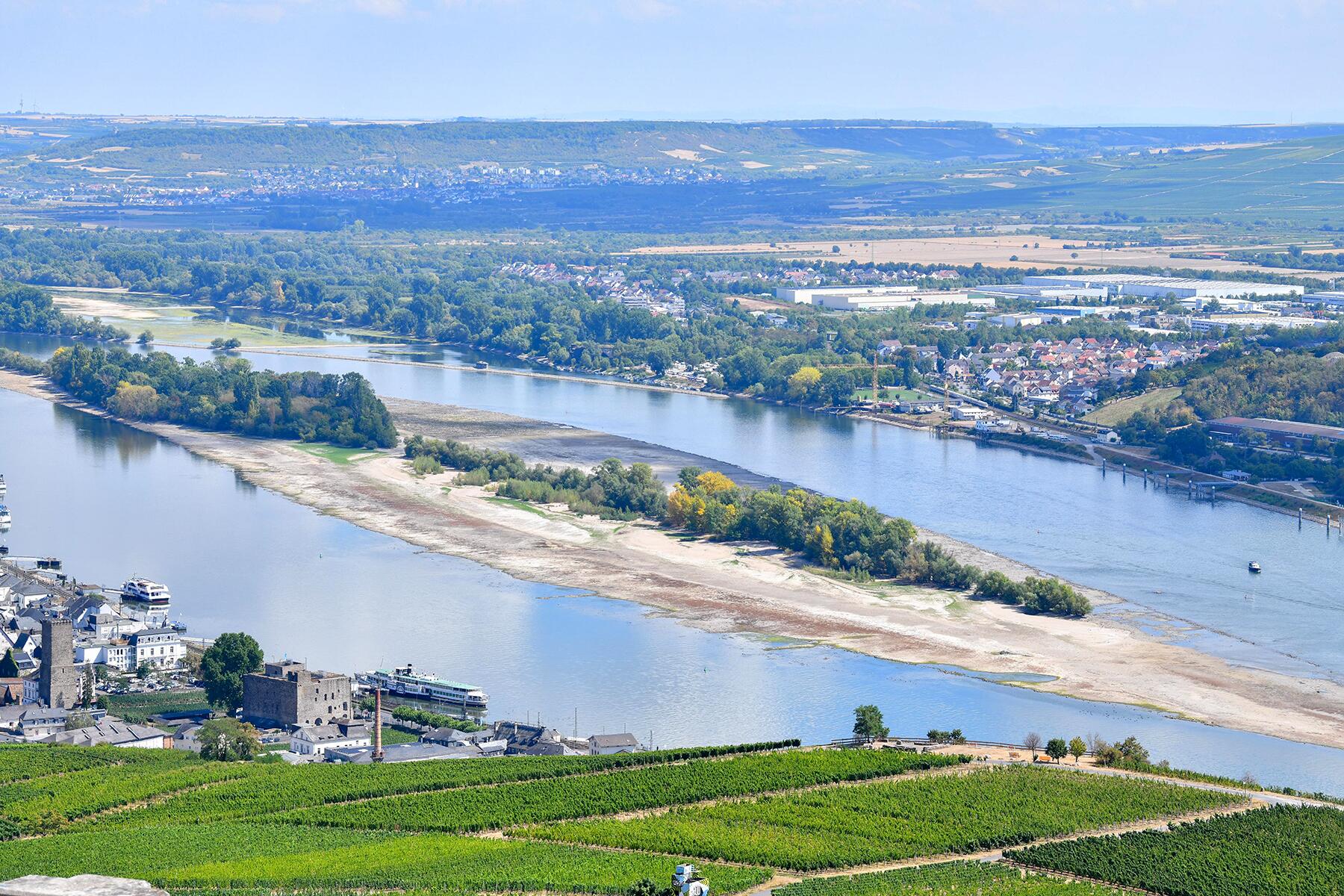
Southern European Watershed
The summer of 2022 saw the worst drought in the Northern Hemisphere, which a new study revealed was 20 times more likely due to climate change. The dry spell reached parts of Europe, the Western United States, and China, where it dried up rivers, caused wildfires, damaged farm economies, and threatened aquatic species and the livelihoods of thousands.
Little precipitation in the previous winter, followed by record-high temperatures, resulted in dry conditions that affected 65% of Europe. Low water levels on the Rhine and Danube Rivers disrupted the multibillion-dollar river cruising industry, and the transportation of goods and commodities. Many disgruntled river cruise passengers complained about being bused between ports and ever-changing itineraries. Spain’s water reservoirs were at 40% capacity by the end of July. As of October 2022, Viñuela, the main reservoir of popular tourist destination Malaga is at 11% capacity, the lowest it had ever been. Some northern Italian provinces have almost run out of water to grow food. Over in neighboring Greece, its idyllic islands, which rely on water imports, struggled to balance the needs of the islanders and agriculture with the demands of tourists over the summer months.
The American West
Closer to home, nearly 23 years of drought resulted in the drastic shrinking of the reservoirs of Lake Powell and Lake Mead on the Colorado River. This has severely impacted 40 million people across several southwestern states that rely on the water for drinking, farming, recreation, and tourism. Arizona and Nevada are facing water cuts beginning January 2023 as the river will operate in a Tier 2 shortage condition. It’s projected that Lake Mead’s water level will be less than 1,050 feet above sea level beginning next year, the threshold required for the tier declaration. If Lake Mead, the largest reservoir in the country, drops below 895 feet, it will be considered a “dead pool” situation, which will significantly affect the Hoover Dam’s ability to generate hydroelectricity. Nearly 1.3 million people in California, Arizona, and Nevada depend on this power.
Tourists visiting Page, a small Arizona town that relies on Lake Powell for drinking water and tourism, saw incredible red cliffs and shipwrecks revealed by the shrinking reservoir, but also had to contend with dragging their kayaks across football-sized areas from the parking lot to reach the shoreline. Although the newly formed beaches are a draw for visitors, it’s important to keep in mind that millions of people rely on the water downstream.
In California’s coastal town of Mendocino, which sees two million visitors yearly, restaurants and inns experienced disruptions due to the rising costs of running water when the aquifers declined and trucking the water from neighboring cities and towns became an expensive endeavor.
In Utah, throngs of national park visitors and the growing tourism sector are responsible for the highest per capita water usage in the country. In 2020, water usage was a staggering 285 gallons per person, per day, in Washington county, home to Zion National Park and the expanding town of St. George. This water usage is double that of an average resident in Las Vegas. Record heat and low water levels on the Virgin River didn’t discourage people from hiking shoulder-to-shoulder on the famed Narrows gorge this past summer. As the water slowly runs out, the fragile desert ecosystems and low-income families are the most affected.
How Can Travelers Help?
Tourism is the primary economic driver in a majority of islands and developing countries. While it brings a wide range of benefits to communities, it also poses challenges that, without proper resource management and conscientious travelers, could amplify a region’s woes. It’s hard to measure our individual impact on nature when we travel and sightsee. For economies that depend on tourism, balancing the benefits with the negative effects is tricky. With livelihoods at stake, banishing tourists may not be the answer. Randy Durband, CEO of the Global Sustainable Tourism Council (GSTC), says they never like suggesting that anyone avoid a place, but want travelers to be mindful of destinations experiencing sensitivities.
“The Global Sustainable Tourism Council has a list of recognized certification standards which you could look out for [when searching for accommodations], such as Green Key,” says Sustainable Hospitality Alliance’s Claire Whitely. While there are so many eco-friendly labels out there, this is the gold standard, with backing from hundreds–from private tour operators such as Intrepid Traveler to government-funded tourism agencies such as Visit Sweden to non-profits such as the Center for Responsible Travel.
Research and patronize companies that prioritize sustainable tourism and practices. In Hawaii, Lisa H. Paulson, Executive Director of Maui Hotel & Lodging Association, says that some hotels are making efforts to be sustainable by using R1 (gray) water for lawn irrigation, satellite-controlled sprinkler systems, low-flow water fixtures, and bottle refill stations. “Many of our properties partner with local conservation groups in constructing water gardens and other projects to prevent water runoff into the ocean.”
“You can use resources such as the World Resources Institute’s Aqueduct tool to see which areas are worst affected, and may even decide to alter your itinerary accordingly,” adds Whitely.
Thailand-based holiday operator Tripseed founder Ewan Cluckie suggests that travelers can also make an impact by seeking out operators and agents that genuinely support sustainable development. Sustainability tourism, like beach cleanups and coral reef restoration, can also go a long way to help communities in need.
Further, visitors should disperse and redirect toward lesser-known destinations during less busy periods to ease the pressure on mainstream hotspots. Off-season, middle-of-the-week, or shoulder-season travel is another win for Earth (and your wallet). Cluckie notes how travelers overlook remarkable Thai islands like Koh Mak, Koh Yao, and Koh Kood due to limited promotion.
Durband reminds us that simple things matter, too. “Travelers should learn to turn the water off to lather and scrub, on to rinse. For both the shower and the sink. Period, anywhere. Avoid filling a bathtub in water-sensitive places.” And Paulson has more suggestions: reuse towels, opt out of daily room cleaning and sheet changes, bring your own reusable water bottle and fill up at the water stations on the property.
Do your research. Take the time to care. It’s worth it.
Contributors to the 2023 Fodor’s No List: Rosie Bell, Apeksha Bhateja, Robin Catalano, Rachael Levitt, Eva Morreale, Deanne Revel, Lavanya Sunkara, Jeremy Tarr, and Nikki Vargas
You missed a spot. Nantucket Island, Massachusetts. We have a very serious housing crisis here. We are urgently in need of affordable workforce housing. I've lived here for many years and have never seen so much building and development happening and yet there is still nowhere to live. Crime is up and trash is everywhere. It's very sad.
“Mendocino” definitions: a whole County, a Coast Region, a town. No the whole County is not without water, nor the beautiful Mendocino Coast. Nor is the sea level town of Mendocino operating different than it has for decades of which businesses have been buying water, not due to the drought.Short Term / Vacation Rentals save the tourism reliant local economy including with water developed & properly maintained on individual private properties, not relying on public water systems or public funds. FYI: Mendocino Countywide Short Term Rentals & lodging bailed out the few media crazed, boisterous town hotels/restaurants last year. Transient taxes, including paid by Airbnb’s, etc. to the County, intended for County promotion, were instead redirected (1x only) to deliver water to Mendocino town businesses & residents who know that the town system has needed to be addressed for decades but don’t want to pay for it. Mendocino town property and business owners, with golden profits, need to take responsibility & pay for their long delayed & expensive water issue without bullying residents or crying wolf to media. Providing water & all the comforts, Mendocino Coast Airbnb’s, warmly welcome you to enjoy our rustic coastline, beaches, extensive nature trails, vibrant communities, wine region, and magical beauty of where Redwoods meet the sea. Hope to see you all soon!
“Mendocino” definitions: a whole County, a Coast Region, a town. No the whole County is not without water, nor the beautiful Mendocino Coast. Nor is the sea level town of Mendocino operating different than it has for decades of which businesses have been buying water, not due to the drought.Short Term / Vacation Rentals save the tourism reliant local economy including with water developed & properly maintained on individual private properties, not relying on public water systems or public funds. FYI: Mendocino Countywide Short Term Rentals & lodging bailed out the few media crazed, boisterous town hotels/restaurants last year. Transient taxes, including paid by Airbnb’s, etc. to the County, intended for County promotion, were instead redirected (1x only) to deliver water to Mendocino town businesses & residents who know that the town system has needed to be addressed for decades but don’t want to pay for it. Mendocino town property and business owners, with golden profits, need to take responsibility & pay for their long delayed & expensive water issue without bullying residents or crying wolf to media. Providing water & all the comforts, Mendocino Coast Airbnb’s, warmly welcome you to enjoy our rustic coastline, beaches, extensive nature trails, vibrant communities, wine region, and magical beauty of where Redwoods meet the sea. Hope to see you all soon!
I would urge you not to visit Lake Tahoe unless you love crowded beaches, gridlock around the lake and beyond, want to spend lots of money because it's really, really expensive here. Gas is $7.00 a gallon currently. Three years ago on New Years Eve we had 80,000 people here in town and most were rerouted to Reno for the entire night and day regardless of where you were staying. So people were sleeping in their cars. People simply do not respect the area and I'm fed up with people's me-me-me attitudes without consideration for those who live here. Thanksgiving and Christmas are horrendous here and the tourists are absolutely rude. So please visit San Francisco, San Diego, or LA. Thank you for your consideration.
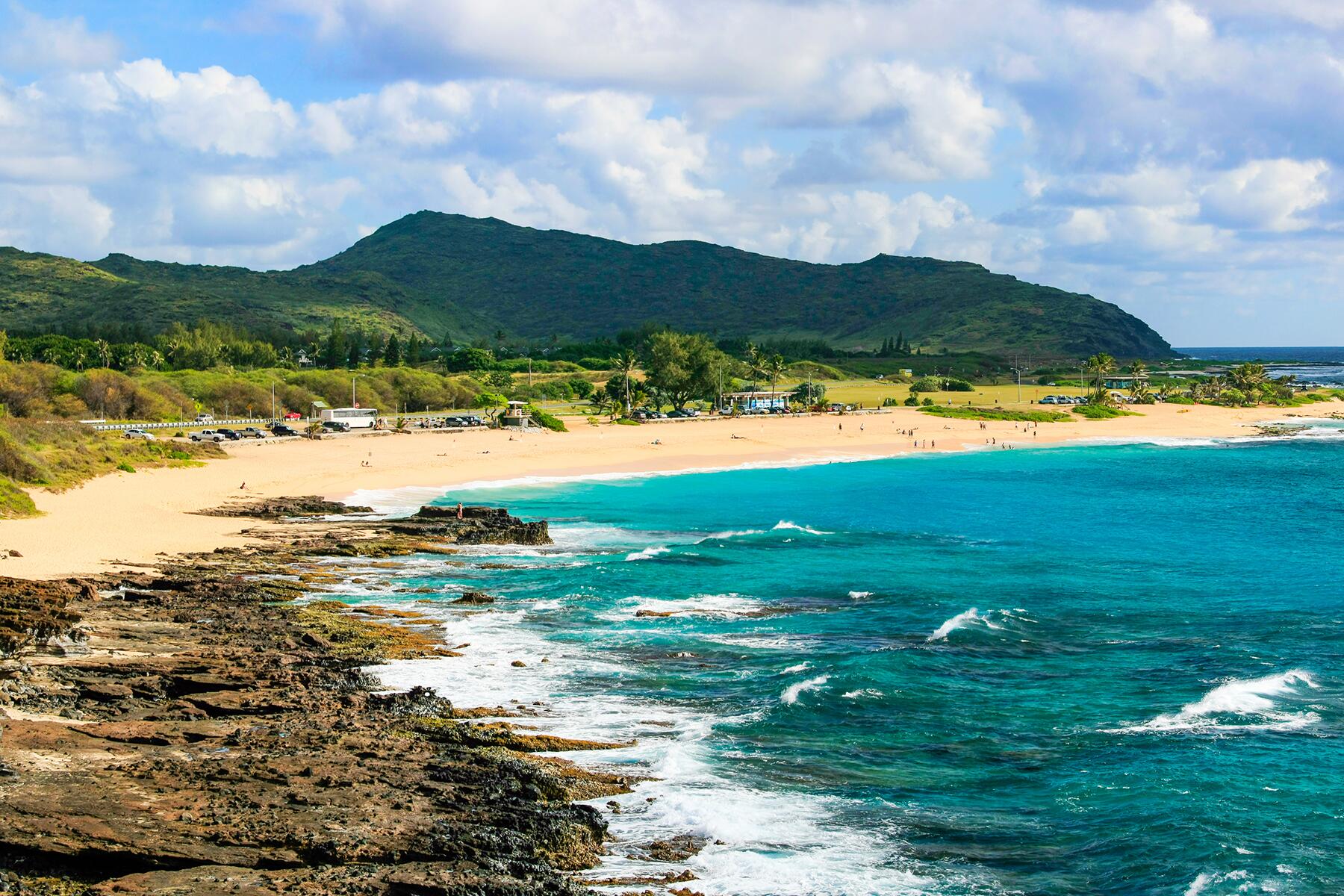



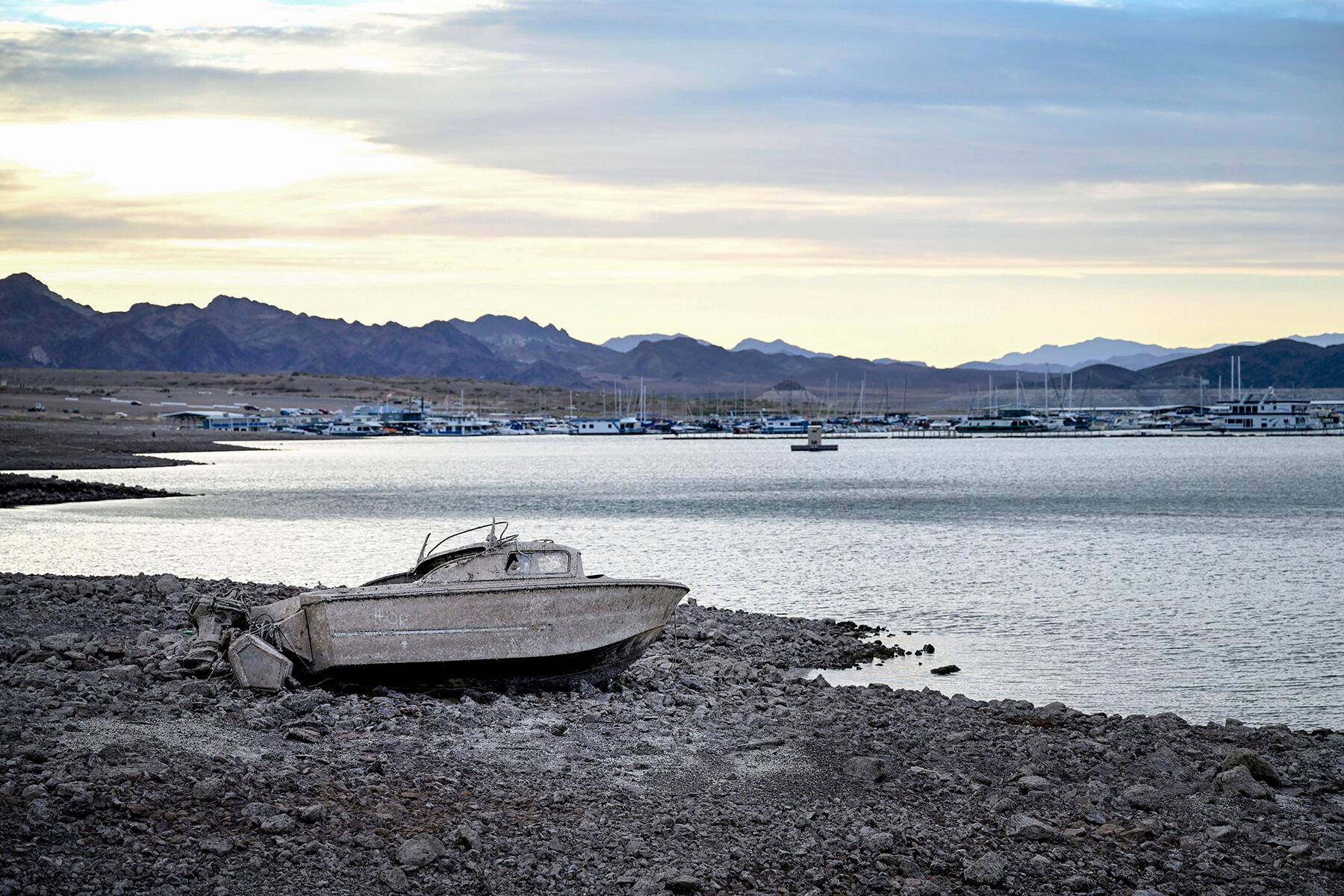
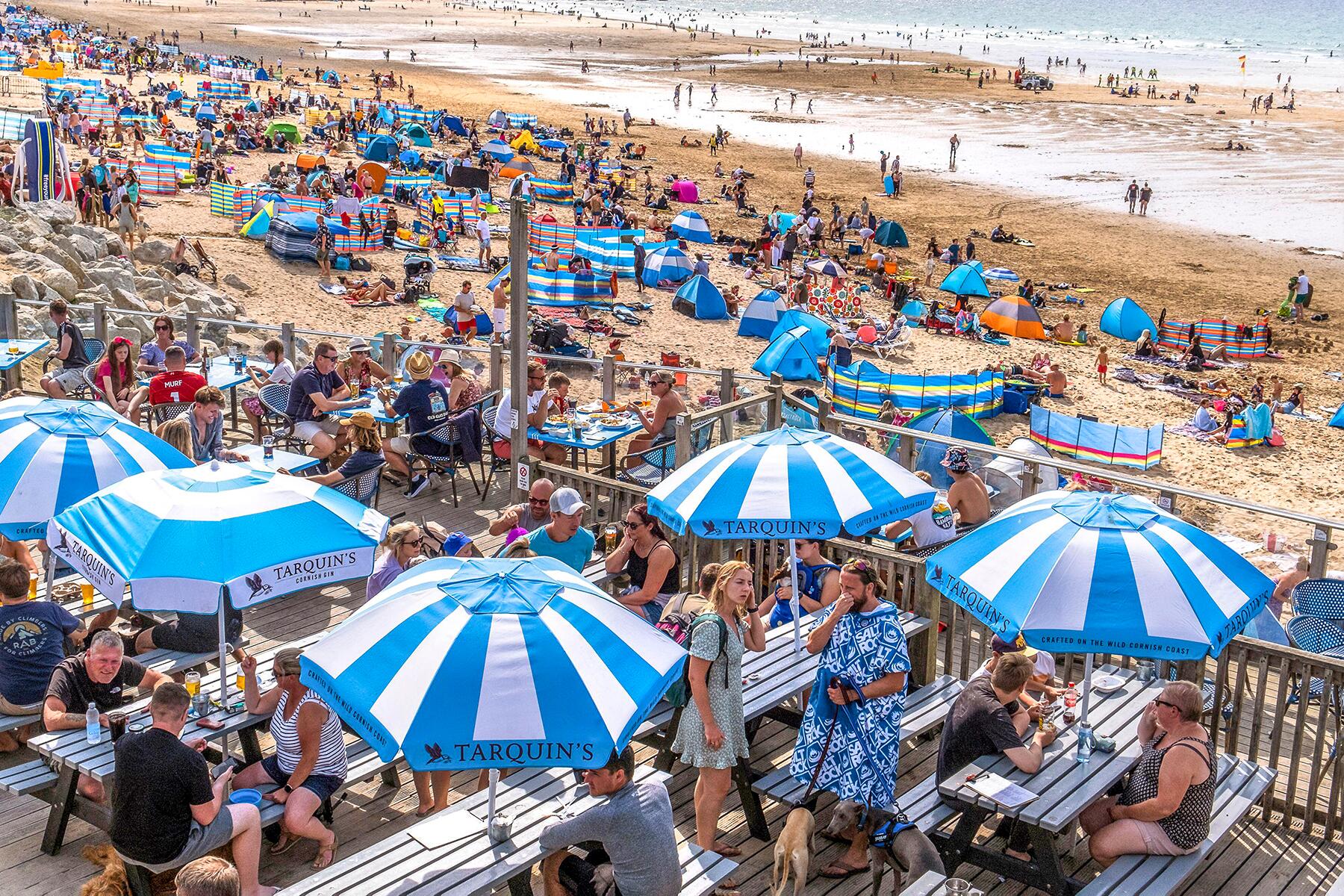
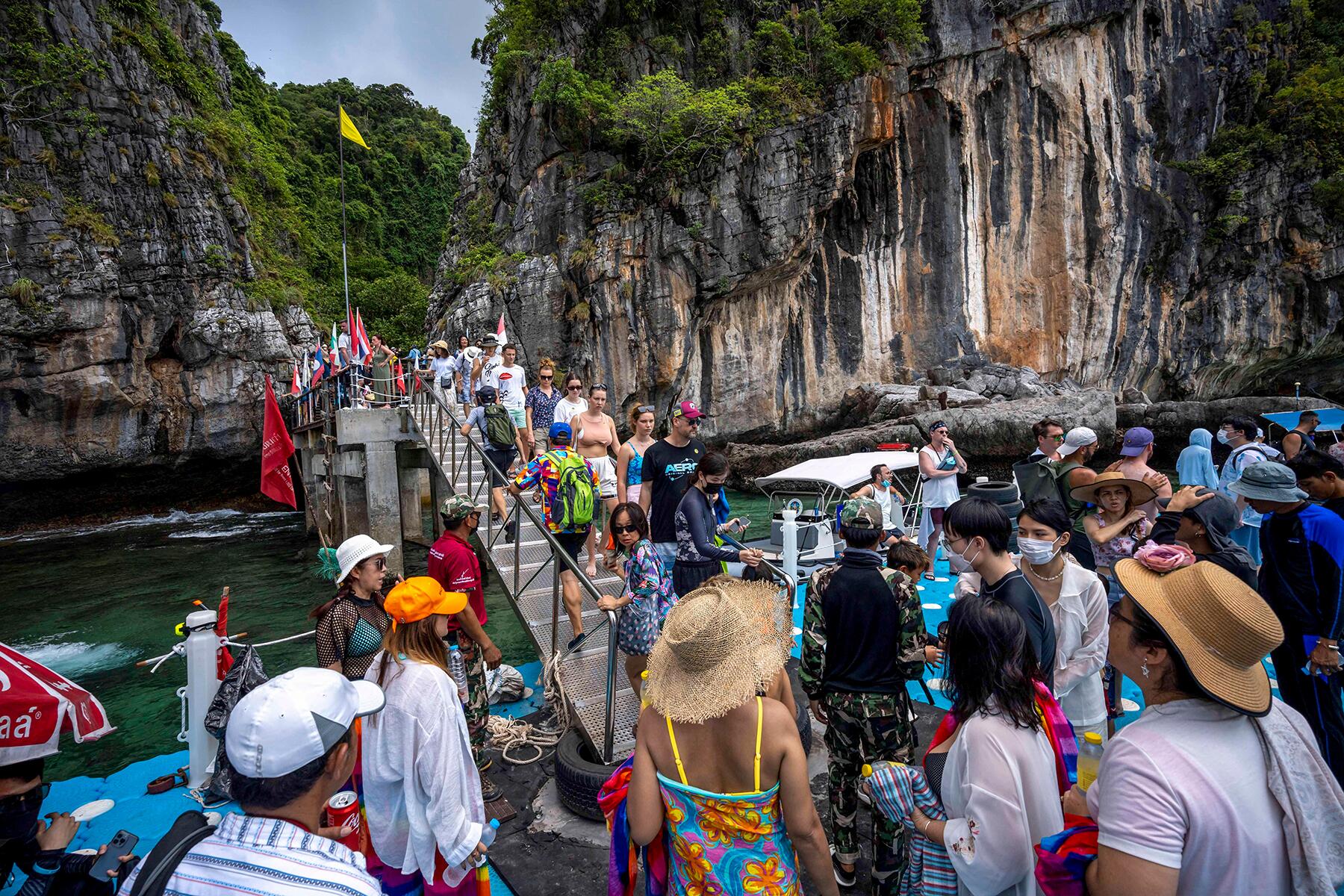
The NW Lake Superior Region should be included on this list. The Apostle Islands National Lakeshore is overrun with second summer home residents, short term rentals and transient tourists. Local residents are being pushed out because affordable housing is non-existant. Workforce housing doesn't exist and you will see campers and tents with workers trying to make a living while the weather permits. The beauty is being overrun by over touristing. The small communities cannot keep up with the demands. Now the cruise ships are coming through and docking. Local business cannot handle the load. The land cannot handle the destruction.